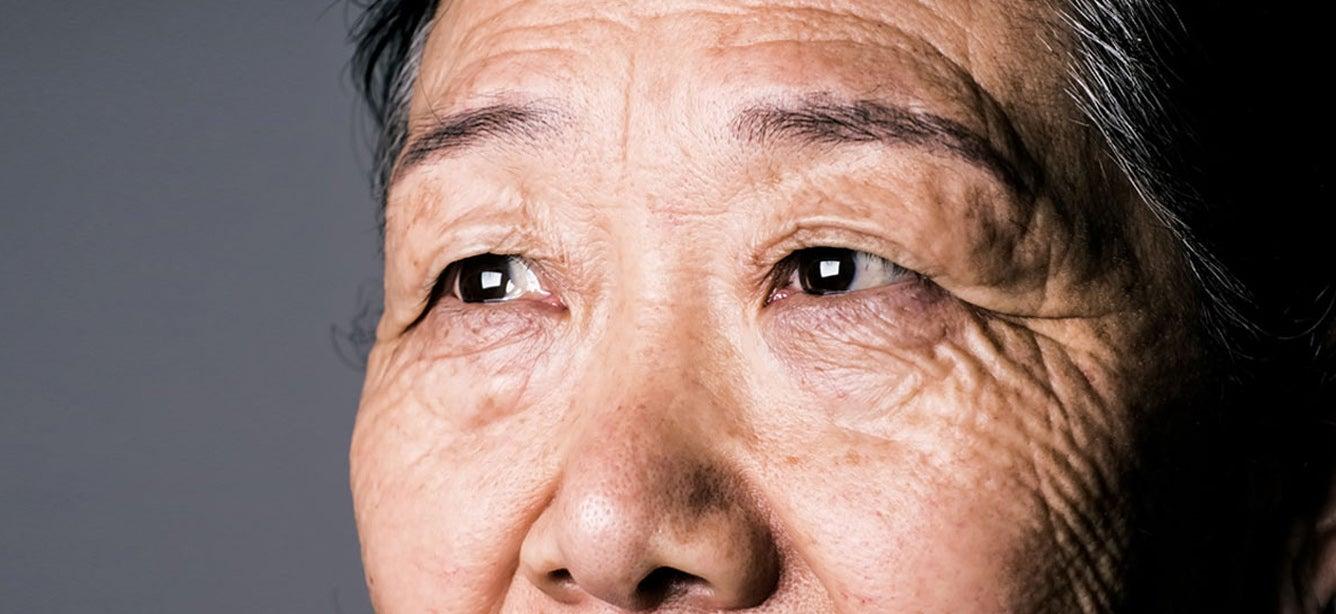
Related Topics
In a nation known for its wealth, too many older adults don’t have enough food to eat. Roughly 7 million older Americans (or 1 in 11 of those age 60+) faced food insecurity in 2022.1
What is food insecurity?
According to the U.S. Department of Agriculture (USDA), food insecurity is defined as "a household-level economic and social condition of limited or uncertain access to adequate food."2 In simple terms, food-insecure older adults can't rely on getting enough food to lead a healthy and active life.
Food insecurity in America
- While older adults are at higher risk for food insecurity, they're certainly not alone. In 2022, 12.8% of U.S. households—or over 17 million people—experienced food insecurity.3
- Of all U.S. households experiencing food insecurity, 7.7% (10.2 million people) had low food security in 2022.3 People with low food security lack dietary quality and variety and may not be able to buy all the foods they enjoy. However, they don’t necessarily eat less than they need. For example, an older adult with low food security might depend on the same inexpensive food items and eat these foods repeatedly. Their diet may be heavy in unhealthier processed foods versus nutrient-dense foods that cost more, such as fruits and vegetables.
- Of all U.S. households experiencing food insecurity in 2022, 5.1% (6.8 million people) had very low food security.3 If a senior is experiencing very low food security, they may eat less food than they need overall. They might regularly skip meals or eat very small portions to stretch their budget further.
The difference between food insecurity and hunger
Food insecurity isn’t the same thing as hunger. While food insecurity focuses on lacking access to adequate food, hunger is a physiological condition. Someone who is hungry doesn’t just experience a rumbling tummy. They may suffer from serious discomfort, pain, weakness, or even illness due to being involuntarily without food for an extended period.
Although food insecurity and hunger aren’t interchangeable terms, they are closely related. Older adults with very low food security often face a real risk of going hungry.
Food insecurity among older adults
Research from Feeding America found that food insecurity disproportionately affects older adults who:
- Have a disability. Older adults with disabilities are twice as likely to be food insecure as their non-disabled peers.4
- Rent vs. own their homes. Older renters were three times more likely to be food insecure when compared to their homeowner peers.4
- Are not married. Among older adults who never married, 16.3% were food insecure in 2022. This rate was 16.1% among those who were divorced, 9.9% among those who were widowed, and only 5.4% among married couples.4
Causes of food insecurity
Food insecurity is a complex issue that usually doesn’t have one particular cause. Food insecure seniors may face many factors that make it difficult to access resources to meet their basic needs. One of these is poverty, often resulting from living on a low fixed income. Food insecurity rates are significantly higher for adults with incomes less than two times the poverty line.4 Other factors include:
- Social isolation
- Chronic or acute health conditions
- High health care expenses
- Lack of affordable housing
Effects of food insecurity
Seniors have unique nutrition needs, and not having enough wholesome food to eat can create harmful health effects. Food insecurity has been linked with:
- Lower nutrient intakes: Older adults with food insecurity consume lower levels of key nutrients such as protein, vitamins A and C, magnesium, calcium, and iron. Insufficient nutrition can lead to malnutrition, vitamin deficiencies, and chronic diseases.5
- Poorer health outcomes: Seniors who are food insecure are 65% more likely to be diabetic.5 They are also more likely to suffer from conditions such as congestive heart failure, high blood pressure, asthma, obesity, and gum disease. These poorer outcomes aren’t just the result of poor nutrition. Often, older adults with food insecurity must choose between buying food and visiting their doctor or paying for medications that keep them healthy.
- Mental health issues: The constant worry and uncertainty associated with food insecurity can take a toll on a person’s psychological well-being. One study showed a clear connection between food insecurity and depression. The same study demonstrated that food-insecure households in North America were at the highest risk for stress and anxiety.6
NCOA’s role
The National Council on Aging is working to mitigate food insecurity among older adults by connecting them to benefits and programs that make food more accessible and affordable.
Senior SNAP Enrollment Initiative
With generous support from the Walmart Foundation, NCOA has awarded over $2 million in grant funding to community-based organizations to assist older adults (i.e., age 60 and over) in applying for and enrolling in the Supplemental Nutrition Assistance Program (SNAP), the nation’s leading food safety net benefit. NCOA supports their and other organizations’ efforts through outreach and enrollment tools.
NCOA’s network of 90 BECs connect older adults to a range of federal, state, and local benefits programs, including SNAP and other food assistance programs.
BenefitsCheckUp offers easy access to benefits programs and resources that empower older adults, people with disabilities, and caregivers to apply for benefits and get help. It includes nearly 2,000 public and private benefits programs from all 50 states and the District of Columbia. BenefitsCheckUp connects millions of people with benefits programs that can help pay for health care, medicine, food, utilities, and more.
Sources
1. Feeding America. Facts about senior hunger. Found on the internet at https://www.feedingamerica.org/hunger-in-america/senior-hunger-facts
2. USDA. Economic Research Service. Definitions of food security. Found on the internet at https://www.ers.usda.gov/topics/food-nutrition-assistance/food-security-in-the-u-s/definitions-of-food-security/
3. USDA. Economic Research Service. Food Security in the U.S.: Interactive Charts and Highlights. Found on the internet at https://www.ers.usda.gov/topics/food-nutrition-assistance/food-security-in-the-u-s/interactive-charts-and-highlights/#trends
4. Feeding America. Food Insecurity Among Older Adults in 2022. Found on the internet at https://www.feedingamerica.org/sites/default/files/2024-07/Food%20Insecurity%20Among%20Seniors%20and%20Older%20Adults%20in%202022.pdf
5. Food Research & Action Center. Hunger is a Health Issue for Older Adults. December 2019. Found on the internet at https://frac.org/wp-content/uploads/hunger-is-a-health-issue-for-older-adults-1.pdf
6. Pourmotabbed, et al. Food insecurity and mental health: a systematic review and meta-analysis. Public Health Nutrition. March 2020. Found on the internet at https://pubmed.ncbi.nlm.nih.gov/32174292/



